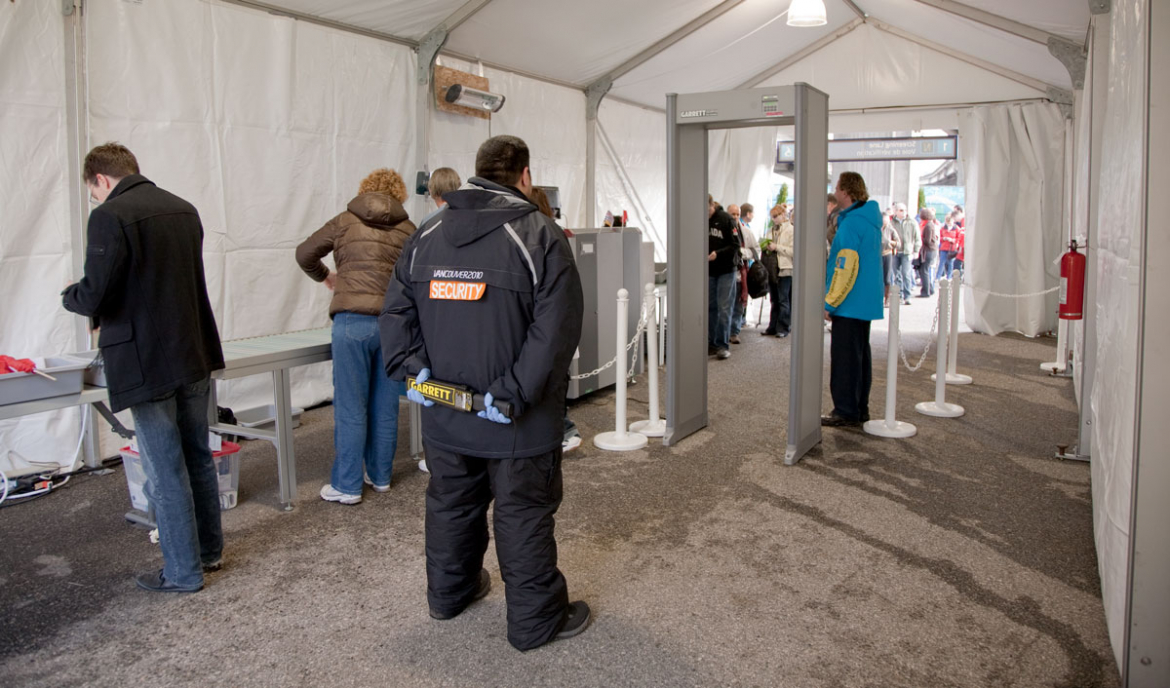As security threats continue to grow in complexity and frequency, the importance of incorporating robust security measures has never been more critical. A comprehensive security plan is essential to protect people, assets, and sensitive information from unauthorized access and potential threats. Metal detection systems, including walk-through and hand-held detectors, are a vital part of modern security strategies, offering advanced technologies that enhance threat detection and response times.
With the increasing need for effective security in high-risk environments such as schools, large events, and courthouses, integrating metal detectors into a broader security plan ensures a proactive approach to risk management, ensuring safety while maintaining smooth operations.
Understanding Metal Detection Technology in Security Systems
Building security planning is a critical aspect of safeguarding facilities, people, and sensitive assets. A well-thought-out security plan ensures that appropriate measures are in place to prevent unauthorized access, respond to high-risk situations, and protect against malicious users or security breaches. A comprehensive security strategy involves not only physical barriers but also robust technological systems that can provide real-time alerts, improve access control, and enhance law enforcement’s ability to respond swiftly in emergency situations.
Metal detectors have become an integral part of modern security systems, enhancing the overall security strategy. These devices play a vital role in identifying individuals carrying metal objects, such as weapons or unauthorized items, which may pose a risk to both individuals and facilities. Whether in airports, stadiums, or government agencies, metal detectors are used to prevent unauthorized access, ensuring that safety remains a top priority.
Advanced Features in Modern Metal Detectors
Today’s walk-through metal detectors, like those from Garrett, feature advanced technology that enhances effectiveness. Bilateral detection ensures better coverage and fewer false alarms, while Quick Q technology provides smoother and faster results, and the touchless programming speeds up the scanning process.
Garrett's hand-held detectors are designed for ease of use with self-calibration to eliminate errors and rechargeable batteries for convenience. These features align with best practices in security, making the detectors ideal for rapid response in high-risk situations.
Integrating Metal Detectors with Broader Security Protocols
Integrating metal detectors into a security program requires aligning them with existing security systems to ensure smooth and effective operations.
Response Planning:
- Develop a clear plan for how security personnel should respond when an alarm goes off.
- Upon threat detection, the security control center should quickly initiate contingency plans, notifying security staff and law enforcement as needed.
- Depending on the alarm, take immediate actions such as controlling access to specific areas or locking doors to prevent unauthorized entry.
Technological Protocols:
- Determine technological security protocols that will activate in the event of an alarm.
- Trigger door locks or other security protocols automatically when a metal detector alarm is activated.
- These protocols are part of an emergency preparedness strategy, helping contain threats and reduce potential damage.
Integration with Third-Party Applications:
- Link metal detectors to third-party applications to log and analyze alarm data.
- Use the collected data to improve future risk assessments, planning, and overall security effectiveness.
Comprehensive Security Integration:
- Combine metal detectors with other security systems, such as access control, other security measures, and visual monitoring tools.
- This integration enables security teams to manage risks more efficiently and meet evolving security requirements in various environments, including commercial spaces, energy infrastructure, and government facilities.
Implementing an Effective Security Screening Program
An effective security screening program requires a comprehensive set of security elements to work together, ensuring a safe and secure environment. These elements must include:
- Access Control: Ensures only authorized individuals enter restricted areas using ID badges, biometrics, or key cards. Metal detectors enhance this by screening for weapons and dangerous items.
- Surveillance: CCTV and monitoring systems track facility activities. Paired with metal detectors, they help identify threats in real-time when alarms are triggered.
- Intrusion Detection: Systems alert security teams to unauthorized access. Metal detectors at key points proactively identify potential threats by detecting metal objects.
- Security Personnel: Well-trained security staff manage and respond to alerts from metal detectors and other systems, allowing automated screening to focus on handling alarms rather than manual checks.
Techniques for Ensuring Safety
To enhance safety across these security elements, the following techniques are necessary:
- Quality Entrance Control: High-quality entrance control screens individuals efficiently using metal detectors, ensuring safety without slowing traffic, especially in busy areas like airports and stadiums.
- Training for Security Personnel: Security staff must be trained to operate metal detectors and respond to alarms. Training should include hands-on experience and learning to handle various scenarios.
- Clear Protocols for Every Step: Step-by-step protocols guide security personnel in responding to alarms, including checking bags, conducting secondary inspections, and determining the threat level.
- Understanding Escalations: Security personnel should know when to escalate a situation to law enforcement or emergency responders, ensuring a quick and appropriate response to potential threats.
- Security Checkpoint Optimization: Optimizing traffic flow with fast and effective metal detectors ensures quick screening, reducing wait times and maintaining a smooth process. This technology minimizes bottlenecks, especially in high-traffic areas.
- Lessened Strain on Security Personnel: By automating the initial screening process, metal detectors allow security personnel to focus on responding to alarms and managing other tasks, reducing their physical and mental strain.
Security vs 911: Knowing When to Call for Help
Not every security situation requires a 911 call. Security personnel need to understand when they can handle a situation internally and when outside assistance is needed. For example, if an alarm is triggered by a metal detector and a potential threat is detected, security should initially follow internal protocols to assess the situation. If it becomes clear that the threat is serious and requires immediate intervention, such as a weapon on site, a 911 call should be made.
Step-by-Step Plan for Testing Your System
- Identify Potential Contradictions: Begin by understanding that security systems may not always function as planned. Anticipate scenarios where things could go wrong, such as equipment malfunctions, false alarms, or delays in response.
- Establish Clear Protocols: For unplanned situations, develop a comprehensive set of protocols for handling disruptions in the security system. These protocols should cover:
- How to respond when metal detectors malfunction or an alarm is triggered incorrectly.
- Steps for recalibrating detectors or manually inspecting individuals when necessary.
- Guidelines for contacting technical support to resolve system issues.
- Train Personnel on Protocols: Ensure all security personnel are thoroughly trained in these protocols. They should be familiar with how to implement manual checks, perform recalibrations, and escalate issues to the appropriate team members quickly.
- Monitor Response Times: Focus on monitoring how security personnel respond to disruptions or unexpected situations. Ensure there are no delays in addressing alarms or technical failures, as this can lead to slowdowns in the security process.
- Evaluate Weak Points: Review where breakdowns typically occur during high-pressure situations. Common issues include delayed responses or incorrect assessments of alarms. Identify these weaknesses to improve efficiency.
- Refine the System: Based on your evaluations, make improvements to the security system. This could involve enhancing the response time, updating technology, streamlining protocols, or increasing the training of security personnel to better handle unexpected situations.
- Test the Adjustments: After making improvements, run further tests to ensure that the system performs as expected in real-world conditions. Continuously refine your system to adapt to new challenges and keep security operations running smoothly.
Comprehensive Metal Detection: Walk-through and Hand-held Solutions
Metal detection systems, including both walk-through and hand-held detectors, are integral components of a strategic plan designed to enhance security while simplifying protocols. These systems are particularly valuable across the United States, where the need for robust security is increasingly critical in high-traffic areas like airports, stadiums, and government buildings.
Walk-through detectors feature advanced technologies like Ambiscan, which detects both ferrous and non-ferrous metals, improving detection accuracy and enhancing overall security. With over 200 sensitivity levels, these detectors can be adapted to fit various environments, addressing the specific needs outlined in a comprehensive risk assessment. Additionally, they identify both magnetic and non-magnetic metals while offering accessories such as remote controls and advanced display modules for smoother operation.
A key feature of modern walk-through detectors is their multiple detection zones, which pinpoint the exact location of detected metals on individuals. This feature enables security personnel to identify potential threats with greater precision and reduces the likelihood of false alarms. As a result, screenings become faster and more accurate, contributing to a more effective security program.
Proper Placement
Effective installation and placement are essential to optimizing the operation of walk-through metal detectors. Detectors should be strategically placed in high-traffic areas to efficiently manage large volumes of people without creating bottlenecks. Proper placement maximizes the flow of individuals through security checkpoints, ensuring smooth, timely screenings that align with the goals of a strategic security plan.
Hand-Held Metal Detectors
Hand-held detectors are a vital complement to walk-through systems, offering detailed spot checks when an alarm is triggered. These detectors enable security personnel to focus on specific areas of concern without disrupting the flow of traffic. Their integration with walk-through detectors enhances the overall efficiency of the security process, allowing for thorough examinations while maintaining a high level of operational speed.
The combination of both walk-through and hand-held metal detectors forms a comprehensive security solution that ensures quick, accurate, and effective screening, providing multiple layers of protection as part of an ongoing risk management strategy.
Why Choose Garrett Metal Detectors
Garrett is an industry leader in metal detection with over 50 years of innovation, providing cutting-edge technology that sets the standard for security. Our detectors offer customizable solutions that fit your specific needs, ensuring your security plan is built around your requirements, not the detector.
Our superior detection technology delivers high accuracy, detecting even the smallest metal objects in real-time. Features like multiple detection zones and advanced sensitivity make their systems ideal for high-risk areas.
With a comprehensive product range, including both walk-through and hand-held units, we ensure you have the right solution for any security situation. Our products are backed by expert technical assistance to help optimize your security plan. Choosing Garrett enhances your security program with reliable, precise screening and ongoing support. For more additional information, our technical assistance team is ready to assist.








